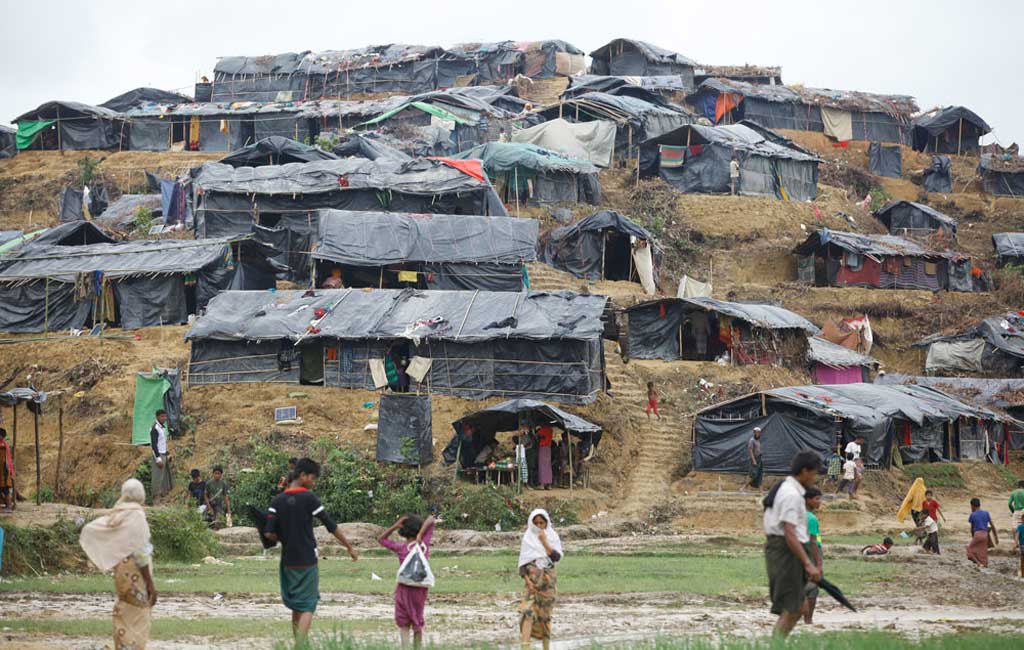
Authorities in Bangladesh are surrounding the Rohingya refugee camps with barbed-wire fencing and watchtowers, turning them into what refugees and rights groups liken to a “prison.” Southeast Asia-based NGO Fortify Rights says construction on some 28 kilometers of fencing is nearly complete around parts of the camps, which are home to some 900,000 Rohingya pushed out of Myanmar. Humanitarian workers fear the fencing could hamper aid delivery and block access to medical clinics. Bangladeshi officials say the fencing is a response to growing concerns about crime and gang violence; humanitarian groups say any security measures must be proportionate. “The civilian and humanitarian character of the camps must be maintained,” the UN refugee agency, UNHCR, warned in December.
Rights groups and aid workers also say the fencing appears to redraw the camp boundaries and leaves thousands of refugees on the outside—sparking concern it’s part of a plan to pushfamilies to the disaster-prone Bhasan Char island camp, to where most refugees have refused to relocate.
Meanwhile, aid agencies are preparing for a donor pledging conference for the Rohingya refugees. Less than half of this year’s $1 billion response plan has been funded.
From The New Humanitarian, Oct. 16
Photo: Dhaka Tribune





Bangladesh: halt Rohingya relocations to remote island
The Bangladesh government should immediately halt imminent relocations of Rohingya refugees to remote Bhasan Char island, Human Rights Watch said. The authorities have reportedly prepared a list of 4,000 Rohingya refugees to be relocated, beginning with transfers to the port city of Chattogram on Dec. 3.
Bangladesh: relocation of Rohingya refugees continues
The Bangladeshi government has relocated a second group of around 1,800 Rohingya refugees from crowded camps in Cox’s Bazar to a facility on a remote, flood-prone island in the Bay of Bengal. Human rights groups are concerned people are being coerced into relocating. The first transfer took place in December, and there are now more than 3,000 people at the facility, which authorities hope will eventually hold 100,000. (TNH)
Rohingya camp fire: barbed-wire fences blocked escape
Kilometers of barbed-wire fencing surrounding Bangladesh’s Rohingya camps may have blocked people from fleeing a massive blaze that burned thousands of shelters to the ground, witnesses say.
Aid groups are still tallying the destruction from the March 22 fire, which spread rapidly across bamboo-and-tarpaulin tent homes in parts of four conjoined camps at the sprawling Kutupalong complex near Cox’s Bazar.
Early assessments found 15 people died, at least 10,000 homes were destroyed or damaged, and more than 45,000 people were displaced. Two children are among the dead, according to aid agency BRAC, and casualties are expected to rise. At least 400 people were initially listed as missing.
Rights groups say the government has erected at least 28 kilometers of barbed-wire fencing and watchtowers around the largest parts of the camps, which are home to some 900,000 Rohingya refugees originally from Myanmar’s Rakhine State. (TNH)
Rohingya refugees flee ‘island jail’
Rohingya refugees continue to try to leave the controversial Bhasan Char island camp. Police have detained dozens of people trying to flee, including 35 this week. At least 11 Rohingya died in August when their boat capsized. Rights groups call Bhasan Char an “island jail.” The government has urged the UN and aid groups to ramp up services on the island, to where some 20,000 people have been transferred. (TNH)